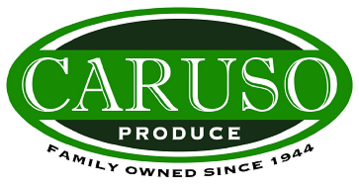How’s sales? That was usually the first question that I’d ask a produce manager during store visits. It was also remarkable how somehow the question seemed to throw them for a loop.
“Sales?” They would answer slowly, meaning they really had no idea where they stood for the week. “All right, I guess.”
The question was rarely something more precise, such as, “We should hit $145K this week if our Saturday pans out like I think it will, as we’re up 3% to 6% in sales over last year so far this quarter.” That kind of answer would be impressive, and I was indeed impressed on occasion.
Achieving maximum produce sales, like most retail operations, is an inexact science. So many factors are involved: seasonality, pricing (of course), quality, stock level, competition, local economics and ample supply. Even the weather can play a role in how many customers will walk through your door.
What then motivates shoppers to reach out and buy something remains anyone’s guess.
We do know from the primitive but interesting data mining of sweeping up numerous shopping lists is that under the “Fresh Produce” heading was often written, “Fruit” and “Stuff for salads” — reinforcing the long-established premise that a majority of produce purchases are indeed impulse sales. (You know, whatever appeals to the customer’s eye in the valuable, “Ah-ha!” moment.)
OK, maybe that moment is not so dramatic. Still, it’s when a combination of thoughts collides: “A bag of gala apples for the kids lunches this week will work,” or “Oh, the bell peppers are on sale. They’re always good for sauteing with ground beef,” or “Fresh jalapenos, gonna get a few to slice up for my breakfast eggs and game time nacho topping.”
Merchandising to match the impulse sale moments is also key.
Once, during an overnight reset, a disgruntled clerk said, “I don’t care what you do, we only sell two cases of bunch spinach each week.” A friendly wager was made, and within a week the store was selling eight cases weekly, simply because of a lobby display was built.
Oh, ye of little faith.
I was in a hardware store last week looking for wood glue for a project. I walked the fastener screw and nails aisle. No glue. “Uh, yeah. We stock that near the paint,” the clerk said. In the paint section? Well, all right, I thought. Clear on the other end of the massive, big box store?
The merchandiser in me thought: You know, it’s their playground, but a shipper display of wood glue would sell very well here, placed among all these other fasteners, right?
Which brings me to my point: the importance of duplicate or secondary displays.
You know the drill: bananas near the cereal aisle, a shot of lemons in front of the seafood case. sliced packaged mushrooms sell like crazy when a display is parked in the meat department next to the steaks, especially during heavy barbecue periods.
I used to build a makeshift display of the candy apples we sold in produce; open cases stacked on a cart and placed near the checkout lanes. Instead of the usual one or two cases, we would easily move 10 to 20 cases, even on a slow day. Sales. Impulse sales.
All the little extra efforts made play right into customers’ heavy impulse tendencies.
Secondary or cross-merchandising isn’t new, and it isn’t limited to the springtime strawberries-and-shortcakes displays either. Every season is ripe for coming up with ideas to push sales with secondary displays. Every day, and especially every weekend or other peak periods, the opportunity to increase sales knows no bounds.
If you can imagine a duplicate display working, make your plan. Know where and how you want to merchandise the item, and make sure the space is available. Order enough product to support the effort, expecting the best quality and the best possible sales.
Give it a try. When the boss comes around, asking “How’s sales?” — you can cite sales figures, all right, but you can also point to some of your extra effort displays to show that you’re not just leaving sales completely to chance.
Armand Lobato’s more than 50 years of experience in the produce business span a range of foodservice and retail positions. He has written a weekly retail column for nearly two decades.



















